Beatifull city
Late one Friday I went with a group of architects — it was a professional subgroup of young architects — to eat barbecue at the Salt Lick outside Austin. Inside there was a large group of University of Texas alumni. They were clearly from Dallas, as their clean and buffy men wore starched pink or ivory linen shirts with crease-ironed blue jeans over orangish boots, with expensive skin, not for working. The Salt Lick serves mostly meat and sides, you bring alcohol. The food is pretty good, but the long low dark hall with the eating porch (plastic-wrapped in winter) running along the south side is artful. There are memorably big yellow tables, well finished. It is difficult to precisely affix the age and provenance of any of it, but it wasn’t thrown together by hicks.
Even better is the drive out from town: once you are up onto the plateau there are weeping clear streams that you pass over to get you in the mood, little ranchettes, a two-mile stretch of highway adopted (its trash picked up) by Hill Country Nudists, the dome of the Barsana Dham temple, and then the worm fence and lights of the stone Salt Lick buildings coming up like a roadhouse as you’re dropping down to the densening woodlands of the first river cut. The Salt Lick is kept up, a quality Texans admire.
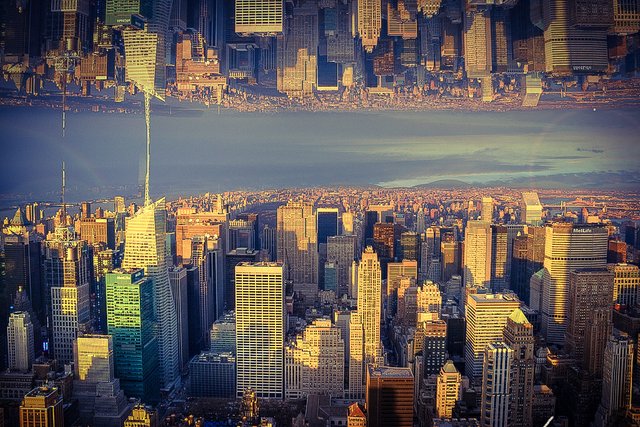
The impressive thing about that group from Dallas — there were maybe sixteen young couples at a single long table — was that rather than bring beer (everyone else was drinking beer), they’d brought tequila, which they were very rapidly turning into frozen margaritas in electric blenders. There were six or seven of these set up at regular intervals along the table, like kinetic floral arrangements, churning intermittently, at a formal dinner. The blenders had been gang-rigged to a single industrial grade extension cord — it had the apparent heft of rigid conduit — that ran the length of the table, then on down the restaurant, duct taped to the floor, to the available plug, a precise solution to a worthwhile dilemma. There were several canvas tote sacks on the floor at one end of the table, inside which you could see cardboard blender boxes, and electrician’s tape and wire strippers, and more tequila, like the kit of some alcoholic yuppie burglar.
I was sitting opposite a Tom something, a young architect. He was easier to talk to when you didn’t have to look at him. Actually, he was a pretty good-looking man. But he wore his glasses in this manner peculiar to architects that drives me to distraction. It wasn’t enough for Tom to just wear glasses. The glasses had to be the evident product of design, and his were a fine clinical steel, narrow and attenuated, each joint celebrated with tiny stainless steel hex-head screws, and little German oval lenses held free along arching steel eyebrows. Fetishized, they perched on his face like a sort of mechanical praying mantis.
The effect entailed one of those weird forest-for-the-trees trade-offs that architects seem so often to make with objects, and furniture, and buildings in landscape, always shading to favor the presence of the thing. I suppose the glasses were extraordinary. But I just couldn’t relax in their presence. I’d be looking at Tom, my focus shifting from face to glasses and back again. The whole time I was wondering: is he looking at me looking at his glasses?
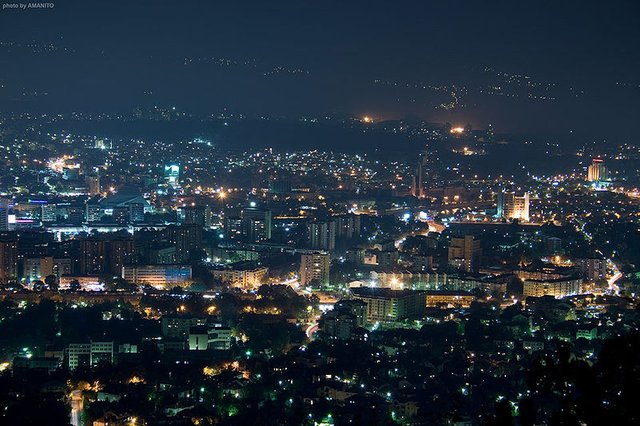
Then there were the other young architects, who, in truth, had entered an age where their moles were sprouting hair. It takes a while to get going in this profession. There is a quality of conversation peculiar to architects, a never letting go. After an hour of drinking you could not sense that any loosening had taken place with the whole group — that said, a drunk architect is usually pathetic. The conversation had started as a sort of picking — mostly at the work of famous architects — but had settled on a theme about which architects like to commiserate. Architects think people aren’t interested in buildings anymore, and don’t look at them, and consequently don’t — can’t — appreciate what architects really want to do, which is make fetishized constructions to sit on the landscape like mechanical praying mantids, which will make people look at them some more.
That’s what the conversation was about. I just think the topic totally misses the point. Nobody ever really looks — or looked — at buildings by and large, because most buildings are of a class of things that people pay a different kind of attention to. It is precisely the not-being-noticed that I like about buildings. So, for me, the conversation was not really going anywhere. I was sitting at the porch window end of the table, and my mind kept drifting outside. There were White-crowned sparrows flitting through the trumpet vine growing along under the eaves: you could see their head stripes clearly in the late light.
The food kept coming for an hour and a half, and despite an apparent mild disdain on the young architects’ part, it all vanished. I got up to stretch — it felt like I was carrying barbecue into the third term — and wandered outside. People were clumped under the trees, waiting for tables. The trees, all Cedar Elms, were unfortunately strung with tiny white Christmas lights. The restaurant had hired a singer to play the guitar and calm the hungry with cowboy-pony-tumbleweed-Prozac songs. His voice was burry but un-darkened, rising and falling in pitch but not volume, optimistic, anesthetic, a television personality for grade school children. He had a laptop that synthesized his guitar and added rhythm and atmospherics: clip-clop, clippity-clop.
Cars kept coming in. A lot of the trucks had Christmas wreaths on their grills. Out in the parking lot there was a standoff between two Suburbans, over a close-in parking space. One of the Suburbans was angled into the space, but needed to back in and out, and that the second Suburban was refusing to allow: isn’t it always the second car that should have gotten the space? In any event the family of the second truck had quickly jumped out to submit their name for a table. The first family was hostage in its vehicle, pretty much pinned between a parked car and the broad nose of the second Suburban, the driver of which held them there a bit before backing off and driving on.
I went back inside and rejoined my table, but sat down nearer the big group of Dallasites. They were getting on pretty famously, having been at the margaritas now for a bit. Blenders kept firing up along the line, and a similar buzzing energy filled the conversation. Little groups were bent towards each other: there was a lot of continuous anticipatory laughter, and you could see the slight and pleasant strain on speakers’ faces from willing each story into outlandishness. They seemed a happy group, competitively so, insulated from the concerns or curiosity of the other eaters.
One thing got me though. I don’t know if you have ever been to Dallas, or been out in Dallas, but no one ever relaxes there. Dallasites work hard and are ever vigilant to convey seamless outward control. To their credit, they appear to believe this quality flows from the superior organization of private belongings, as in a correct taxonomy of personal effects. Carrying the secret knowledge of their orderly closets at home, people in Dallas are publicly enabled, as others are by wearing erotic underwear under business attire.
So I reasoned the blender people were re-living times spent in Austin. You see that a lot here, and you hear it mistily: “God, that was a great four years.” I think many people want to come to Austin to be fundamentally irresponsible after the drudge of high school and before the drudge of work. For a while there was a rumor floating around that UT had the highest incidence, for a big state school, of HIV among heterosexual students. I don’t think it’s true, but it gets to a kind of point: those kids aren’t necessarily stupid, but while they’re here they’re happy dumb.
Actually, no one in Texas thinks of Austin as a real city, and as a city it is in truth a model of nothing. Invented almost from scratch as the capital, its consequent slight grandeur of scale has never been matched by its industry, and so it has had a vague pleasant lithium quietness. Few cities — Madrid and D.C. come to mind — share this peculiar birthright and quality. Like these, Austin had for many years the blessing of a constant artificial economy — the university, the government — without real boom or bust beyond the murk of real estate speculation, a city without the vagaries of city-ness. Then, really in the last ten years, that particular odd disembodied quality became desirable.

For what it’s worth, Austin arose from the desire of the young nation Texas — having just pulled off both a stunningly opportunistic land grab — we’ll just get rid of the landlord — and singularly effective public relations coup — we’ll call it freedom from tyranny — to legitimize itself correctly. The new town was named for Stephen F. Austin, the original developer of the whole Texas concept, who secured, from the Mexican government, the initial lease allowing forty American families to virally infect the once forbidden territory. There is still to the city the residue of both the darker underbelly and the idealistic impulse. In my mind it’s not so clear that a lot of students having sex while studying isn’t somehow dead on.
Over my drafting table is pinned a copy of an early map of Austin, in which you see the Colorado River, as yet unconstrained, bending variously through the territory — east, then south, then east again (in what will become Town Lake), out of the hills over rapids (the Deep Eddy), then along the edge of the city grid, and away into the Blackland Prairie. The perfect rectangle of the city is well over to the eastern edge of the document. Southwest of the city, a creek enters the river at an elbow, and perhaps a half-mile up this creek there is an area a little larger than a city block, surrounded by a fence. Within the fence there is a farmhouse, and then this sort of navel, with a little umbilical cord snaking to the creek.
That navel is Barton Springs, one of the perfect places: 23 million gallons of clear limestone-filtered water, every day, from a series of cracks in the fault that runs along the eastern edge of the Edwards Plateau in a line extending across the state from San Antonio through New Braunfels, San Marcos, Austin, Temple, almost to Waco (I-35, on the road map, is the scar tissue along this crack). Each of those towns too has its springs, where a river sutures the immense limestone sponge of the plateau to the fertile eastern farmland, and most of these oases have been inhabited for thousands of years. On the map there is, dotted as if by little feet, a trail leading from town rather quickly out to the Springs.
Barton Springs is the great psychic heart of Austin, more central, though disembodied, than the Capitol Building. This is partly due to the quality of its elixir-like water, which is perpetually 67 degrees and literally stunning: when you get in and when you get out you are always thankful. You can swim there year-round, though some people prefer to swim in the winter, when the water doesn’t seem as cold, and there is no admission charge. The week just prior to dinner at the Salt Lick had started quite warm, warm enough to swim. I was floating on my back in the deeper end of the Springs as a cold front came through, the temperature dropping over fifteen minutes, and the increasing wind denuding the pecan trees. Leaves floated down and gradually covered the water, and me in it.
During the Depression the creek bed along Barton’s was dammed to make a swimming pool about a third of a mile long. The creek itself was channeled past the pool, under a sidewalk, so that instead the pool fills with water only from the springs. The pool is a long, thin, slightly flaring rectangle, pinched just about halfway along its length. Its long edges are partly the natural limestone creek bed and partly concrete sidewalks. The pool changes depth abruptly where it pinches in the center, at a series of boulders below which the springs have scoured out the channel. Fish congregate at the boulders, and occasionally in the late afternoon you see cormorants chasing fish below you, if you wear goggles. There are no lanes, but I’ve never run into anyone, even swimming full out.
In the variety of spaces surrounding the pool is played out — to the extent that it can since you have to pay admission during the summer — a sort of map of a good part of the society of the city. Where the limestone shelf eases into the shallows next to the meadow below the bathhouse are young families and committed couples. As you move toward the middle of the pool, below the entrance, you begin to find serious swimmers, who especially covet the low wall mid-pool, and the steep lawn behind it (good for winter sun), just in front of where the lap swimmers turn, or stop, and come dripping out of the cold. Across the way is the diving board, framed by cottonwoods, home to teens and other exhibitionists. The big meadow under the pecan trees is mostly college-age singles and hipsters. Directly across the deep water, among a series of thin and fractured retained areas, you will find individualists and isolationists of every stripe. Within the big open air dressing rooms people sometimes sunbathe naked.
The short sides of the pool at the far ends are sidewalk-thick dams. The dam upstream looms over the shallows. Downstream, hidden by the deep water, the dam is an invisible lip dropping to the creek bed beyond (dogs and kids and adults congregate there to play in the free run-off turbulence). So, when you float or swim in the deep, or look along the pool from the shallow end, you cannot see the creek immediately below the lower dam. Instead your eye is channeled along the densely wooded valley, which points more or less directly back toward the city. Since the trees hide low-lying chaff, near or far, for many years there was nothing much to see in the distance.
Then, in 1973, American Bank built a skyscraper on the block at Colorado and Sixth, exactly central to the view from the Springs. The building was covered with reflective gold-tinted glass, the use of which dates a building more precisely than any Carbon-14 test ever could. As the sun went down, that golden tower twinkled like the onset of a migraine headache for every swimmer in the cold water. I recall reading or hearing somewhere that Heidegger, the German philosopher, said the site for a building was a lance as it glittered in the sun, symbolizing intent, or as it was thrust into the earth, symbolizing presence. It wasn’t hard to get the gist that, for many Austinites, the bald fact of the Bank tower awakened the sinking realization that sinister forces were afoot, ones which had designs upon the city that perhaps did not include making still more perfect the methods of floating in the springs between bouts of sex, studying, governing, and blending margaritas.
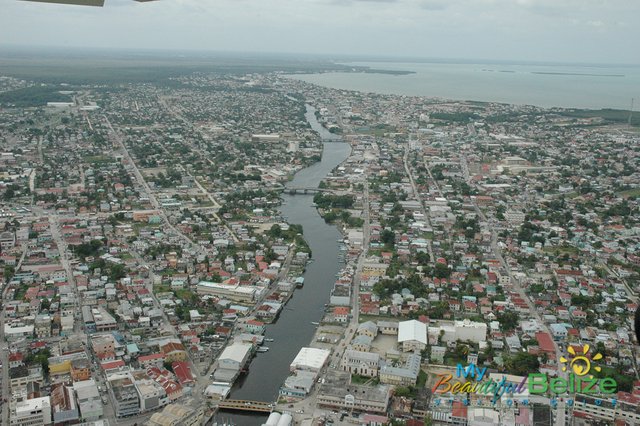
And, of late, the Springs are increasingly being closed following big rains, when the fecal coliform count jumps too high. Development of the vast emptiness upstream to the west is thought to be a culprit. Grey water is sometimes used to irrigate golf courses over the recharge zone, which reaches out toward Bee Cave, where another Austin begins around and about Lake Travis. The presence of a salamander endemic to the Springs was used to try to slow that development; in turn it was used by developers to try to prevent swimming. Facts, politics, money: the Springs are gradually being strangled, as one landscape takes over another, like starlings, or hydrilla, or antibiotic-resistant strep.
The Monday following dinner at the Salt Lick I got an apparently benign phone call, about building a house out at Lake Travis, from a man named Gordon Maggers. The conversation really didn’t click, and I was disheartened by it. Mostly I thought he would be a client who would never get the value of working with an architect, so probably would hate paying. But it was hard to tell. Gordon kept jumping into his explanations midway, assuming I understood, because of what he thought architects did. Apparently the local A.I.A. office had given him my name, among several. I started talking about normal services, and billing, and the design process, but he cut me off. He was already somewhere else: “No, no — I know how the house is going to be laid out. I already have plans, they need some changes.”
“But, you don’t know how it is going to look?”
“No, I do, it’s a traditional house. I saw it at Lakeway, and I have pictures. I talked to the owner, and those are the plans I have, from that builder.”
“So — wait — you just need it redrawn? But mainly you’re looking for … a contractor: I mean, can’t that builder make it for you?”
“Well, yes and no. He can, but there is just an unusual thing, about where it has to go. The builder said maybe I should talk to an architect, or maybe an engineer. I think you could understand it out there better. Certainly I could explain it to you more clearly. Look, could I just pay you to come out for half the day?”
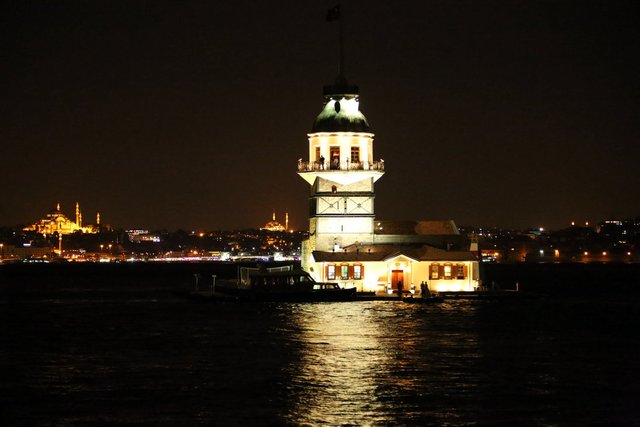
The next morning I drove out the Southwest Parkway, and along 71, roughly paralleling Barton Creek, turning in at Bee Cave, where 620 runs north to the Mansfield Dam, which forms Lake Travis. Lake Travis is the anti-Springs: all beer and melanoma, and overlarge portions, and people being killed in powerboats, and Home Owners’ Rights. The lake is about sixty miles long, its edge an aggressive, expanding exurb. Despite the water, it’s hard to imagine dwelling there. The landscape is largely barren, depressing, like an irrigation project. The waterline varies in elevation over the year, to maintain the constant water level of Lake Austin downstream. To get insurance and permits, house builders have to set finish floors one foot above the highest possible flood line. So all the houses sit like flotsam at that elevation, short on short side, just above a bathtub ring of dead black sticks and bits of styrofoam.
Actually the water only rarely reaches that high line. Below is all washed gunmetal gray limestone, and whatever ferocious plantlings seed fast enough between floodings, and bits of brown glass. Shoreline lot owners watch this moonscape — it is the bulk of their property — appear and disappear as the water level rises and drops over the hundred or so feet it will vary. Even above the flood line the soil is scarce. The trees are stunted, the houses severely exposed. At least, set by the waterline, they are out of each other’s view.
I turned west off 620 onto a fresh blacktop separating hilltop lots to the left and waterfront lots to the right. From the position of the houses on the waterfront lots driving in, you could approximate the high water line: it was still well downhill. Several miles in the road reverted to caliche. Gordon’s was just there, at the edge of development. The lot immediately uphill had stacked piles of steel I-beams and channels, getting ready for God knows. Gordon’s lot was on the lake itself, and the driveway dropped quickly through some sizable cedar — you could make a beautiful tiny house there — and came out on an exposed hard limestone flat at the edge over the moonscape, clearly the spot for a House.
Gordon’s minivan was parked under a large live oak along the far edge of the flat, blocking the view further west along the lake’s edge. It was cool and windy even with the sun out. Gordon was sitting inside his van, but he got out and walked over as I pulled up. My heart sort of instinctively fell. There just aren’t a lot of interesting clients, and my first take on Gordon was that he belonged to that group of society for whom Architecture ranks below Orthodontics.
But I was nice enough. He began showing me photos of the house he’d seen, filed in a binder. These he described in excruciating detail, going so far as to comment on, for example, a bedspread that he didn’t like, as if it might derail the design process. The house was just another graceless instant heritage limestone pile, over-proportioned, and too large too for the space there on the flat. What he saw in it — but I’d already decided it didn’t matter. I was going to find some student to draft it, and we’d just pack it in. It seemed doable.
Lake Travis. [Photo by Mark Scott]
I interrupted his description of the photographs: “So, Gordon, what exactly is the problem?” The whole time we’d been standing in the middle of the flat, but now Gordon motioned me over to the lakeside edge, looking northward. Beyond and below, the gray limestone moonscape began that everywhere ringed the lake, with one startling exception, that had been invisible to me, as earlier it had been hidden from view behind Gordon’s minivan and the oak.
The lot immediately to the west had been substantially revisioned. Where the high waterline would normally, given the topography, have quickly crossed that lot below the house, Gordon’s neighbor’s land instead bulged out into the lake in an immense lawn that eased down gradually toward the lake, while falling precipitously to either side, as if some gigantic sea turtle had pulled up to rest, burying its head beneath his neighbor’s house. With the water twenty feet down, the hump projected perhaps a hundred feet out, and it appeared to keep going under the water.
It was all man-made. Stepping along the property line down to the lake was a concrete retaining wall. The surface of the hump was quilted with squares of St. Augustine grass that now, in early December, were tan and shriveled, seams showing where the grass had not taken. “In August when the lake was really down he just had one dump truck after another pour topsoil out there. It went on for days, the son-of-a-bitch. We’d only closed on our lot for nine days. We tried all fall to back out of our contract, went to court, lost.”
Yeah, I would have too, it was that ugly. Palm trees had been sporadically planted up near the house — of which all you could know was its mustard-yellow sprayed on stucco. Toward Gordon’s side there was a palapa — it was unpainted treated lumber — with white Adirondack chairs underneath, and a hot tub and bar. At the tip of the hump there was a variable elevation floating dock with jet skis and two bug zappers. Strangest of all, anchored some hundred and fifty feet off the tip was an aluminum party barge, with a hideous teal plastic roof. There was someone out on the barge — a woman — sitting in a deck chair reading. Maybe she had to get away to admire it all! Anyhow, I felt bad for Gordon. There was no way to excise any of it from your view of the lake, and, standing there, I knew it would be even more ugly one floor up.
But at least now I was interested. Nightmares like that — when the cycle of propriety is pretty well tossed out — sometimes lead to interesting work. So I just started talking: “You know, that is a problem. But maybe we could begin to think of the house not so much as a big stone box with windows, but perhaps as a series of stone fin walls that screen your view, like blinders on a horse. Or we could begin to imagine a house that capitalizes on a series of private gardens rather than the big view. After all, you know, after six months people with a single big view are usually sick of it. …”
I turned to see if any of this was registering with Gordon. He was looking at me slightly dumbfounded. Then suddenly he sharpened: “Oh, no — it’s not going here! No, you’re thinking — no, the house isn’t going here!”
It was my turn to be stupid: “But where else can it go, up the hill in the cedar?”
“No, no” — he was smiling efficiently — “no, come on, let me show you. This is why I called.”
Houses on Lake Travis. [Photo by Kris Miller]
Gordon started towards the water. The Lake was about twenty feet down that day. I followed, stepping down from one limestone ledge to the next as we went into the moonscape below the flood line. There was a small army-green flat-bottomed boat tied up at the water’s edge — actually it was attached to a form tie for the neighbor’s retaining wall. I got in, and Gordon started the tiny electric fishing motor and pushed off, and as we slowly moved from shore he began to explain: “All of the parcels along here run to the center of the lake. That’s typically how land gets divided along a river, and Travis is really the Colorado. But if you look at where the center is” — he now pointed to the horizon — “well, that is a way off to the west. The lots were platted with the waterline in mind, but they still make it to the middle. So they have to angle west, and get thinner. Mine turns about one hundred and fifty feet out, under the water. It crosses in front of my neighbor right there where my wife is, out on our barge.”
We had been heading out straight from shore, but as he spoke we turned toward the aluminum barge parked off the end of the hump. “We’re still over my property here. I had it surveyed with divers. We chained the barge to three tethers on an expanding leash. If it’s really windy out of the north, and the water is really low, then there is a statistical chance we might trespass.” He was turning now to come alongside one of the aluminum pontoons, while his wife had gotten up as we approached. He turned to me and winked: “Son-of-a-bitch would just have to come get me. Margie, here’s the architect.”
Gordon tied off the skiff. I shook hands with Margie. Her fingers were frozen from being out there in the wind. From the barge you could see further up and down the lake, and it made the hump seem all the more perverse, even in that forsaken landscape. The whole house stared down at us through a huge glass picture window, like a Cyclops.
“So here,” said Gordon, stamping on the deck, “here is where we are going to put the house: you just line it up with that picture window. It’s about twenty feet down to stone. You saw the steel coming in? I thought we could weld it first on shore and tow it out. We’ll frame it just like an oil derrick. Thirty feet of welded steel cage — or I suppose we could bolt it up in pieces. The house just goes on top, a few feet above flood line. That steel is strong, and it should hold up my stone house. So here’s my question: can you figure that cage out for me?” It was heart-breaking. Gordon paid me in cash, which he gave me in an unsealed envelope.
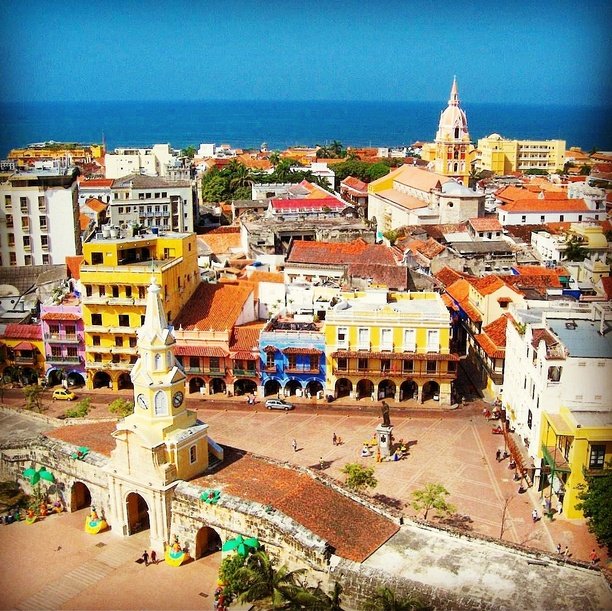
Congratulations @sweetgallery! You have completed the following achievement on the Steem blockchain and have been rewarded with new badge(s) :
Click on the badge to view your Board of Honor.
If you no longer want to receive notifications, reply to this comment with the word
STOPDo not miss the last post from @steemitboard:
Congratulations @sweetgallery! You have completed the following achievement on the Steem blockchain and have been rewarded with new badge(s) :
Click on the badge to view your Board of Honor.
If you no longer want to receive notifications, reply to this comment with the word
STOPDo not miss the last post from @steemitboard: